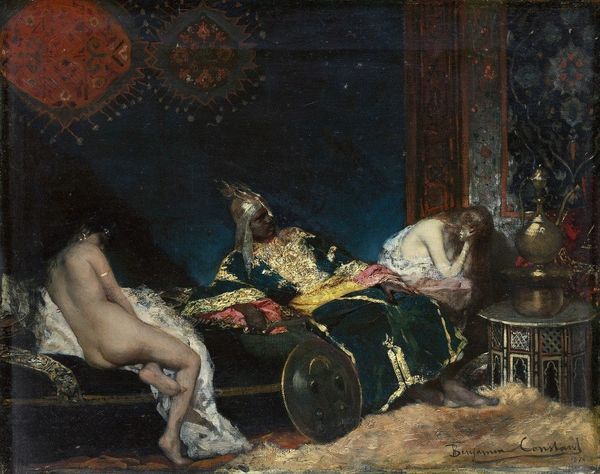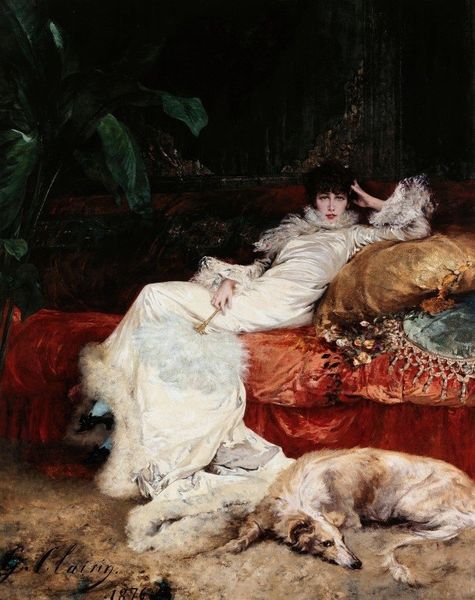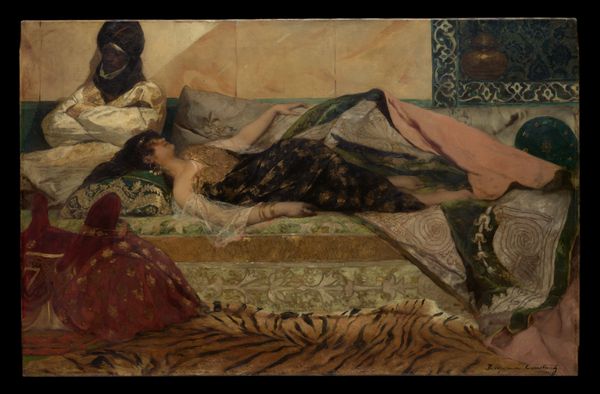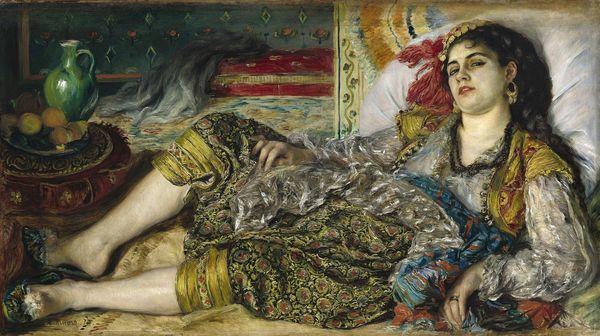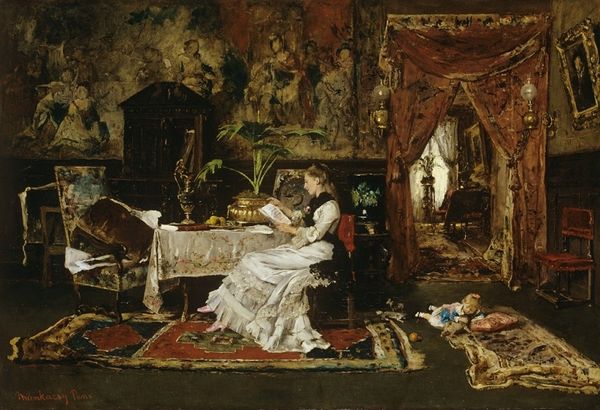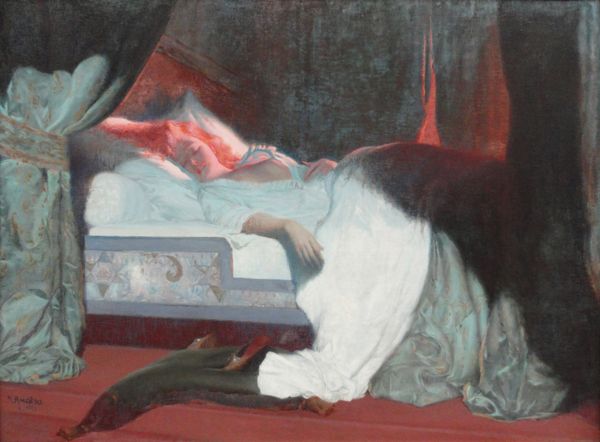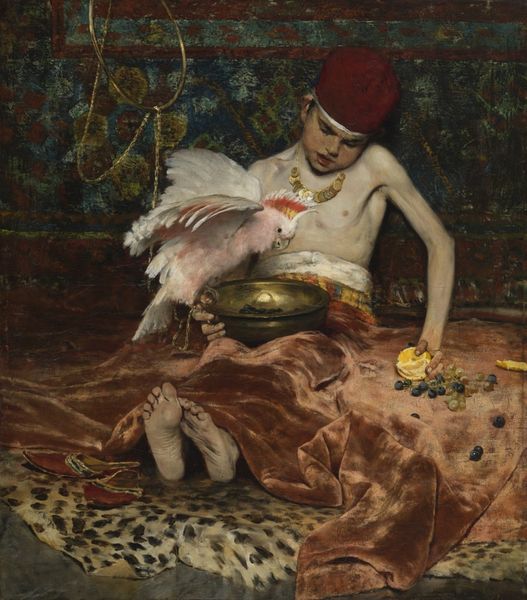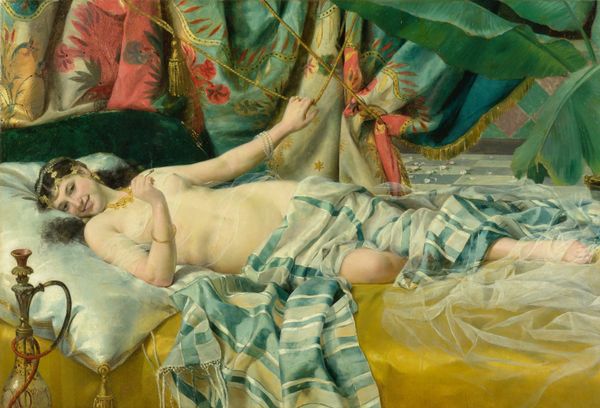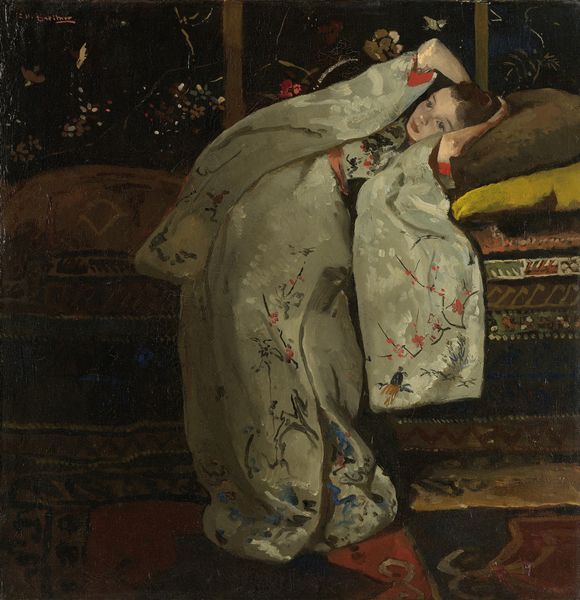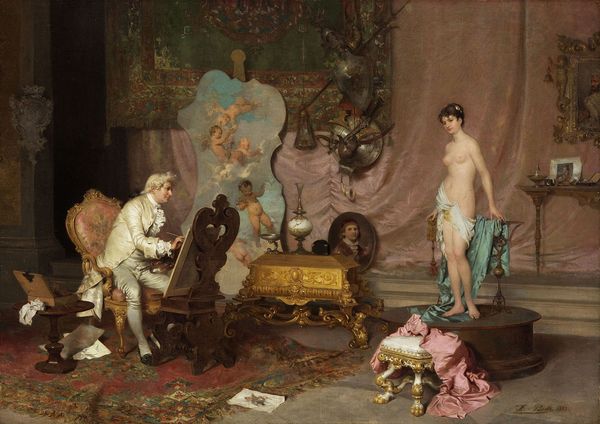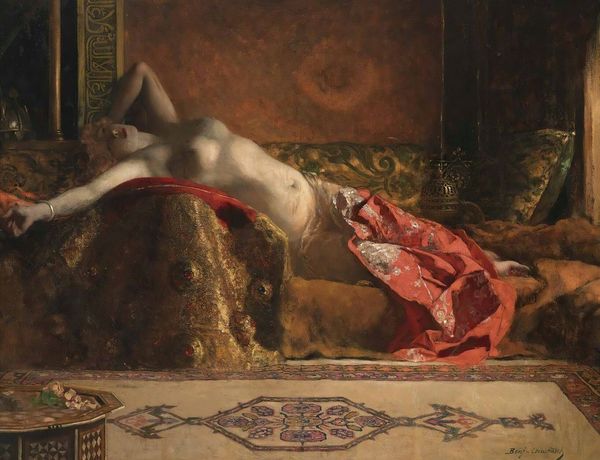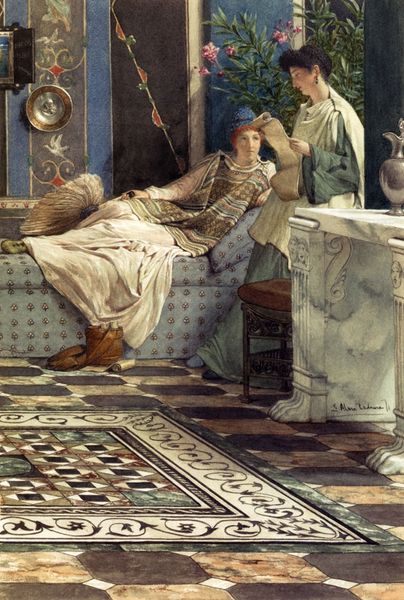
painting, oil-paint
#
painting
#
impressionism
#
oil-paint
#
asian-art
#
orientalism
Copyright: Public Domain: Artvee
Curator: Oh, this still life has a rather languid feeling. Look at the textures, the layers of fabrics, the glint of the vase. There’s almost a wilting quality. Editor: Precisely. What you are observing is Elihu Vedder’s “Japanese Still Life,” completed in 1879. Oil on canvas. It’s an exploration of Orientalism filtered through the late-19th-century American artistic lens. Curator: Orientalism, of course. But it feels so deliberately arranged. See how the objects relate to each other formally: the dark, solid vase juxtaposed against the lightness of the shells and fabrics? The careful positioning, with the background screen establishing depth? Editor: Right. It’s impossible to separate such a composition from the period’s broader fascination with Japan. You had the influence of Japonisme sweeping through artistic circles… But these images did carry a political charge. Curator: Of course. These still lives are never politically neutral, are they? The artist is engaging in an aesthetic enterprise to highlight particular shapes, patterns and juxtapositions. Here the planes and textures play beautifully against each other. I am mostly intrigued by how Vedder builds up a story just with texture and visual planes, yet it becomes so powerful when tied into art history. Editor: But where does Vedder really position himself? There is such a market during the turn of the century for all sorts of things coming from "the Orient," and to consume such cultural artifacts at this scale, the paintings are being used for advertising or as aspirational signals to potential audiences that wish to obtain those objects. It brings up questions of class and social status within this culture. Curator: Indeed, his paintings participate in a construction, shaping public perception, creating an understanding that could also serve social needs. But does he celebrate Japanese aesthetics? Or exoticize it, objectifying for a western audience? Editor: Maybe both. Art's so rarely either/or, is it? He’s navigating a complicated cultural landscape. One which continues to invite interpretations through shifting socio-political contexts. Curator: Precisely. Examining an artwork can be so insightful as one starts seeing visual structures. The more closely you look, the more there is to discover. Editor: The ongoing reassessment of such cultural interactions is essential. We understand so much by reflecting on these historical interpretations and their impact.
Comments
No comments
Be the first to comment and join the conversation on the ultimate creative platform.
